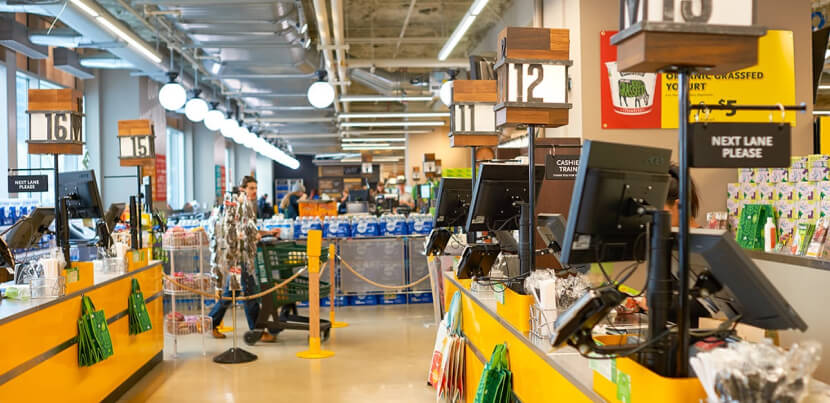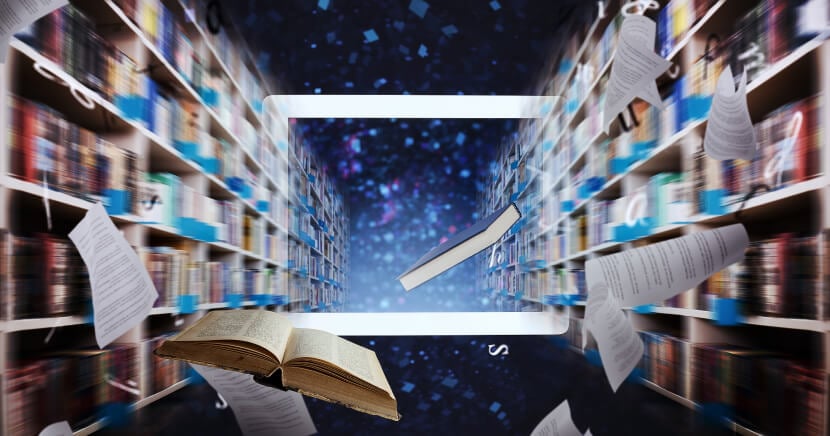We’re all connected by the stories we share. Stories bring us together. They help us discover the world and understand the people around us. But, there’s been a shift in the way people read. The reading habits of young people and new students, are changing — especially when it comes to newspapers and magazines.
Are libraries future-proof?
It’s not about smartphones and tablets versus physical papers and glossy magazines. It’s about giving students and researchers access to the most relevant information in a way that makes sense to them.
“Higher education is shifting because its core constituents — students — are starting to behave more like customers and are less forgiving of some of the inefficient and ineffective aspects of the academy not tailored for a strong customer experience.”
Andrew Roth, President Emeritus, Notre Dame College
A 2021 report from academic publisher SAGE found that, looking ahead to 2030, most academic librarians foresaw their roles evolving to incorporate even more digital services and online resources. So what does the library of the future look like?
See also:
-
How digital information technology has helped academic libraries survive
-
How academic libraries use artificial intelligence to improve their services
Nothing will ever be the same and that’s good

There’s been a shift in the way people discover content of all kinds — whether it’s videos, music, newspapers or peer-reviewed journals. That makes the job of of the library a little harder, but if the final outcome is a better way for more people to discover important information, that’s good.
Other industries are listening to what people want and are fundamentally changing the way they operate.
In a world where the business models behind newspapers, magazines, literature, movies, music, groceries and clothing have transformed to meet drastic changes in society and human behavior, both academic and public libraries must follow suit or be left behind. So, let’s put on our researcher hats and ask the important question: what can libraries learn from other evolving industries?
-
Switch gears, from a collection-centric institution to a people-centric service
-
Make library services available to students where they want it, when they want it
-
Focus on the discovery experience and adapt to changes in patron behavior
Shift from a collection-centric institution to a people-centric service
Content is King, Distribution is Queen
Discovering content
Nobody seems to know for certain how many web pages have been indexed by Google. Let's just say "billions". Even if that's just a tiny fraction of what's actually on the internet, it's more than we could ever hope to read, organize or even pay attention to. So, content may be king, but it’s the distribution solutions that make content discoverable.
The video and music streaming industries learned long ago that while people are interested in particular pieces of content, it’s the way that content is discovered that’s most important. Remote, unlimited access on all devices — laptop and desktop computers, tablets and phones.
Open Educational Resources
As more open-source content is developed, libraries will have to consider their ability to let students self-direct their learning and access content when and where they need it.
The key is for the library to invest in more comprehensive, user-friendly services and deliver all kinds of content on a single, searchable service.
That’s how new technology will help students and faculty find exactly what they need in an ocean of data.
Digital Media
Campus libraries often offer printed media with a few select digital editions of periodicals and newspapers, restricted by budgets. Studies have shown that librarians expect usage of their online libraries to grow exponentially over the next few years.
The challenge, then, is that few publishers actually want to work with libraries the way students need them to. The challenge is getting all content creators to sell digital replicas of their product, instead of just a subscription to their website.
Technology partnerships
Partners like Popup Picks and PressReader bring content from thousands of sources onto a single, searchable platform. They also make it easy for students to access information, using IP addresses, referral URLs or geofencing to authenticate connections.
When a campus library collaborates with distributors, publishers, students, and other digital partners, it can reach readers wherever they are and in a way that makes sense to them. The challenge here is that these partnerships have to align with the mission of the school.
With the rapid acceleration of technologies such as artificial intelligence, many young people may worry that innovation is evolving far too quickly and is threatening their privacy, data and job security.
So, how can academic libraries make things easier? That’s the big question. Keep reading.
Being people-centric means giving them what they want
Help your audience find the right content
“Content without discovery is like playing chess without a board”
Sarah Richards, Content Design
The music and video industries have adapted to new ways people consume content — by individual songs instead of albums, or by binge-watching a series instead of waiting for weekly episodes.
Newspapers and magazines use an array of digital channels to distribute their content. They’ve diversified their business models, expanded their network.
Libraries of the future need to focus on building new ways for students to search for and access the right information and materials when they want it.
49% of 18-24 year olds said the library was a place to find information (DeRosa).
That’s only half. In order to change that perception, libraries have to anticipate the future needs of their communities by creating new ways to discover information that engage and resonate with a new generation of learners. Libraries at colleges and universities have to be clear how and why they’re helping their users become better researchers, better at discerning fact from fiction, better at finding the knowledge they’re looking for.
The challenge for academic libraries in the coming years is to win over other faculty members at their institutions, as well as students.
If librarians want to help audiences find the right content, they’ll have to fully embrace their role in teaching students to separate fact from fiction and navigate the world of knowledge at each of their fingertips.
The internet is full of both credible sources and unsubstantiated claims. More than ever, students need help learning how to sort through research.
Be a destination, not a path to one
Years ago, the publishing industry learned to adapt to changes in the way people actually use their products and services. It was the same with music. The radio was never a place to discover music. It plays top hits that listeners already know and want to hear.
Streaming made music about discovery, about finding something new. But, just as vinyl appeals to some listeners, so do collections of printed books and journals.
It’s all about the experience — what it’s like getting your hands on the book or your ears on the music. The library has long been a place to read, study and work. It's a place for students to look for specific pieces of information and research particular topics among the existing resources.
But expectations have changed. As consumers, students have low “tolerance for multiple contacts, transfers, long wait times, slow responses and ineffective issues resolution” (according to Business Wire). They’re looking to make quick choices and get fast access to a world of information. Libraries have to deliver instant gratification.
So, like streaming services, libraries of the future have to become destinations in themselves, spaces that make the act of discovering knowledge exciting and enjoyable, rather than some vehicle to a predetermined end goal.
“Students want the library to fit with the way they work.”
Ben Hickman, The Guardian
Give them what they want and keep them coming back
Be system experts, not a system of experts
Remember video stores? In a video store, the best employees were the ones who knew all of the endings of all the best films. They knew how to make recommendations and help customers make decisions. They made the destination more appealing by focusing on the discovery experience.
Now, streaming services have given that role to an algorithm — for better or worse. That process has been automated and scaled out to millions of people — simultaneously.
For example, per James Silver, Netflix’s “differentiator lies in its use of data, terabytes of which are analysed to build recommendations for each subscriber…people expect to get what they ask for on demand without waiting."
The library professionals of tomorrow have to transform from experts at helping students search for information to experts at helping students use and navigate discovery technology.
A 2023 white paper from SAGE frames this as creating "an opportunity for academic libraries to increase their visibility and build stronger relationships with students, by providing targeted support and resources that are directly relevant to their academic needs".
Libraries should lead the building of intelligent search and discovery systems and create an engaging digital experience.
“The typical Netflix member, on average, will only look at 40 or 50 titles before deciding what they want to watch, even though there are thousands of titles available. So it’s important we present the right content to the right member at the right time.”
Todd Yellin, Vice President of Product Innovation, Netflix
For libraries, the difference is that their algorithms or search networks should work across all systems and have an understanding of other parts of the patron’s complete life as a researcher.
It’s about what happens, not what you find
Grocery stores have transformed to emphasize customer experience over everything else. From store design to online shopping to subscription delivery services. Anyone with a role in shaping the library of the future should take note.
The whole Whole Foods experience

Whole Foods, a popular high-end supermarket known for organic vegetables and free range meat, has made shopping an experience. When I visit, I first must walk through the bakery and the floral department. I’m offered samples.
I’m immediately brought into their world and encouraged to stay. The aisles are designed to bring me along on a journey that leads me to consider new grocery items I hadn’t written on my list.
Sometimes I try the new thing, sometimes I don’t.
Either way, I know that that is the place to go when I want to discover something new.
New digital library resources, spaces, and technologies will help librarians engage students in a way that feels individual, personalized, and helpful. For academia, remaining “relevant and accessible in the digital space means competing with the seamless experiences students are used to in the rest of their lives,” according to Ben Hickman.
The academic library of the future
Over the next few years, academic and research libraries will face a number of challenges. They’ll have to improve digital literacy and open access to resources. They’ll have to adapt entire organizations to modern student behaviour while improving library integration with other parts of the institutions they serve.
Libraries will also have to contend with increasing political pressures, budget restraints, and community demands for radical changes in service.
As Matthew Hayes, managing director of Technology from SAGE, puts it, now is the time "for academic libraries to re-evaluate their role in the student experience and reimagine how they can best serve the needs of the student of tomorrow. It is clear that academic libraries must embrace new technologies and adapt to changing student expectations, while continuing to provide the essential services and resources that have been at the core of their mission for centuries."











